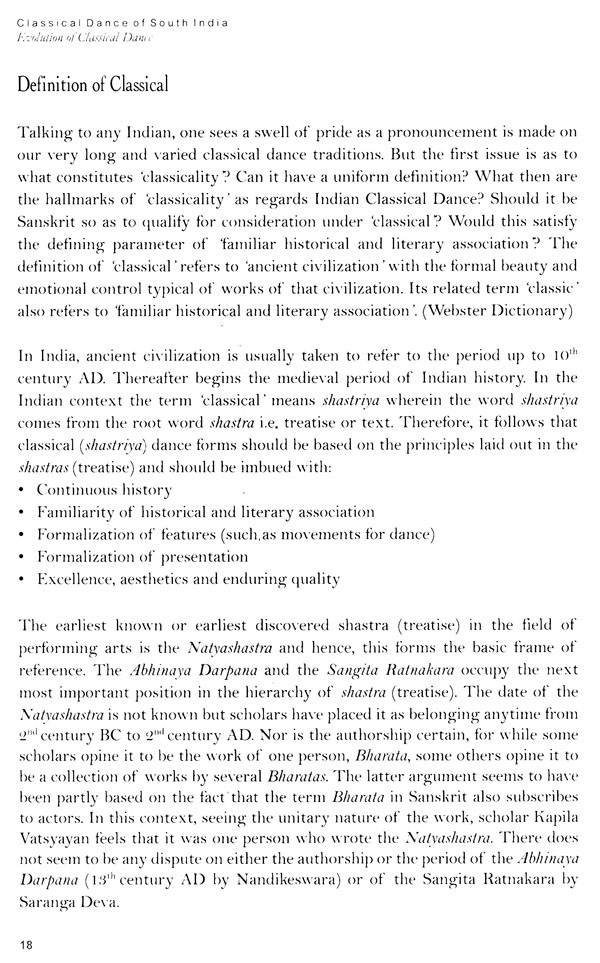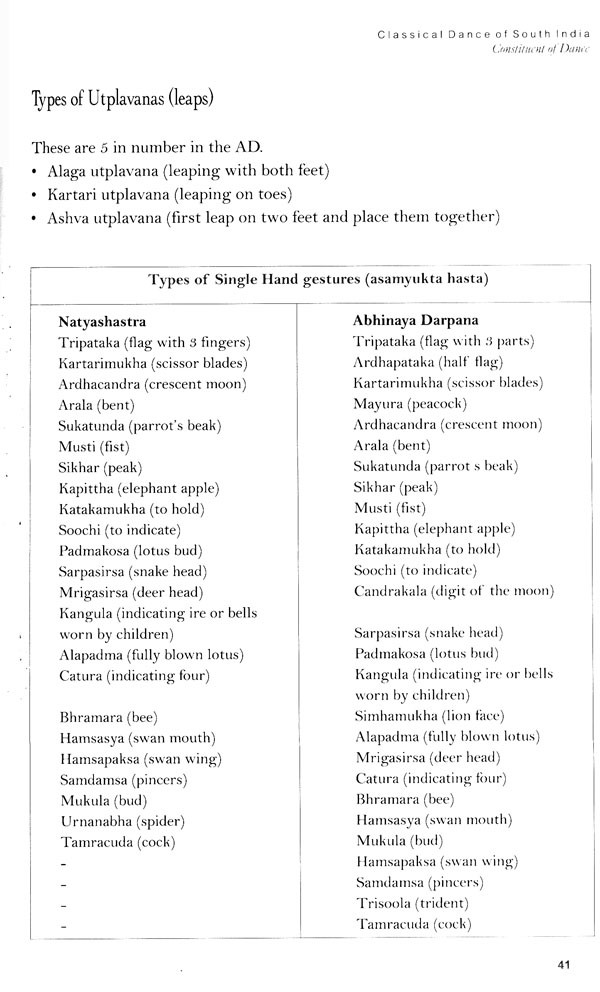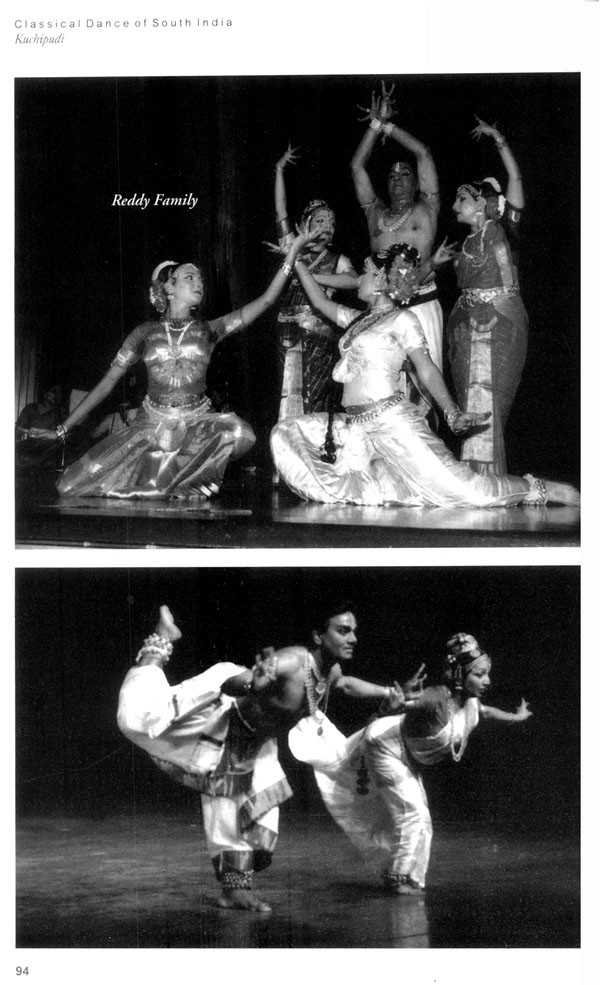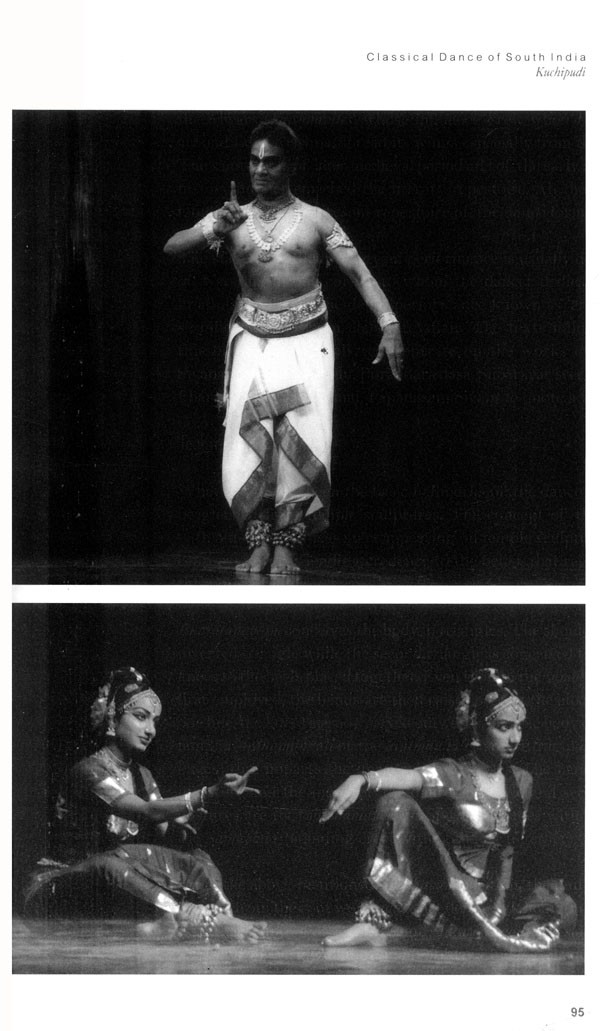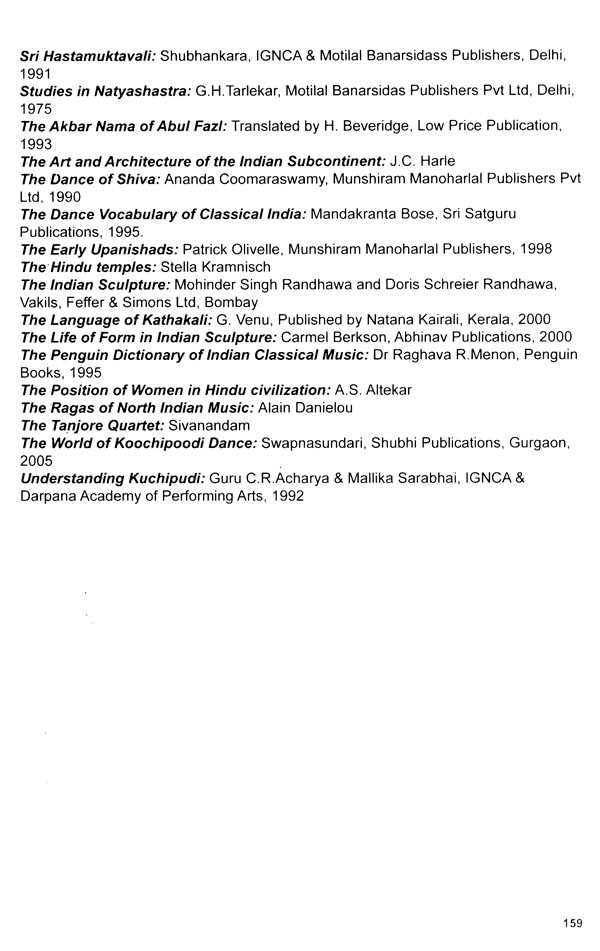
Classical Dances of South India
Book Specification
| Item Code: | UBE982 |
| Author: | Shovana Narayan |
| Publisher: | Shubhi Publications, Gurgaon |
| Language: | English |
| Edition: | 2012 |
| ISBN: | 9788182902626 |
| Pages: | 160 (Throughout B/w Illustrations) |
| Cover: | HARDCOVER |
| Other Details | 9.00 X 6.00 inch |
| Weight | 370 gm |
Book Description
Though many books of Indian Classical Dances are available, this Indian Classical Dance series by Shovana Narayan can be described as the book among books' on Indian Classical Dances for these are comprehensive and detailed encyclopaedia on different classical dance forms essaying the historical evolution and influences, characteristic identifying features, techniques and also the format of presentation in an evening's programme of each style. The book also details the repertoire, texts utilized, costumes and make up of each characteristic of each dance form.
This Indian Classical Dance Series with its exhaustive information and liberal use of photographs is a must for all. Some of the interesting nuggets of information prove to be eye openers demolishing and demystifying few prevailing hypothesis.
Transcending the mechanical framework. she is a bold and innovative choreographer and has also worked closely with nationally and internationally acclaimed Indian and western dancers and musicians from various streams of art. Shovana's palette contains other media, including films and operas as well as being a dedicated guru whose disciples are creating their niche in the world of Kathak that once again bears testimony to the intensive training being impacted by her.
A believer in humanity, she is also a promoter and organizer of several benefit concerts to raise funds for rehabilitation of victims of natural calamities while discharging her responsibility to society and to classical performing arts by organizing regular Festivals for the acclaimed and for the future torchbearers thus.
Shovana Narayan is a classical example of a true Kathak, multi-faceted and dynamic, and presents a challenge to today's spectator. Her life and her works have made her a role model and peer for millions of girls of the younger generation of today.
She is also a senior serving civil servant belonging to the Indian Audits and Accounts Service (1976 batch). Married to Dr. Herbert Traxi, Austrian Ambassador, the two have a son, Erwin Ishan Traxl, Her younger sister, Ranjana Narayan, is a lawyer and a classical singer.
Scholars of the twentieth century sought to find linkages to various elements of dance in the term Bharata, author of Natyashastra. Each of the alphabet making up the word Bharata was taken to signify bhava (from Bha), raga (from Ra) and 'tala (from Ta) respectively. These three important limbs of dance are applicable to the entire panorama of classical dance forms for without them no dance can be visualized.
In this book an attempt has been made to provide a detailed glimpse into all that goes into developing and making the dance form. The Introductory chapter summarizes the constraints and similarities found in the development of the panorama of Indian classical dances and also the realization of constantly expanding horizons of research and ensuing knowledge.
Any talk on Indian Classical dance begins with a reference to the statue of the dancing girl from Harappa and the monumental treatise, Natyashastra. However there is a great gap between the periods of these two eras. An effort has been made not only to discuss the dance scene that may have existed as evinced through literary or sculptural sources during this interregnum period but also ponder upon the definition of classical in the Indian context. It also examines whether any kind of notation system for dance may have existed besides tracing the first seeds of development of regionalisation of dance forms that eventually led to our distinctive classical dance traditions.
Dance being an effective mode of communication, encompasses within its fold all aspects of movements and expressions and thus based on classifications of the Natyashastra and the later treatise, Abhinaya Darpana, this series dwells on the constituents of dramatic, pure movements and expressional aspects of dance besides the sub-classifications of movements relating to major and minor limbs of the body. Stylized rendering that has been termed as 'natyadharmi' has been discussed in detail in addition to the philosophical and textual traditions that are commonly followed by all dance forms united by the spirit of spirituality.
Through in depth readings, observations and interactions what emerges are the following That all our classical dance forms started in simplicity with reference to style and movement.
That each one can trace its origin back to at least a thousand years with some going back to two thousand years: That till less than two hundred years ago the present structure, contents and formalization that constitute margam or the classical rendering, was not present in all forms;
That most of the classical dance forms as we know them today seem to have been re- constructed and re-structured within the last two centuries, some even within the last 60-70 years: That the temple dancing tradition by women became prominent only from 4 century AD That the practice of male devotional dancers had always existed; That secular dance was known at all times;
That with the social reformation that began in the 19 century AD, dance forms performed by women had to undergo re-christening as well as sanitization;
That this process of social reformation induced a search for identity and a need to legitimise, theorize and justify existence in terms of antiquity by conscious tracing back with the help of temple sculptures, incorporating elements that had either had been lost sight of or had not been practiced earlier,
That the sculpture of the dancing girl from Mohenjo-Daro is appropriated by each and every style as point of origin; That temple sculptures which exist are mostly from 5" century AD onwards, That the earliest individual sculptures and panels and relief presently available are from 3" century BC onwards;
That though talking about Natyashastra as the fountainhead of antiquity and classicality yet all dance forms follow and practice the codifications as laid down in the Abhinaya Darpana, That all dance forms have similar roots of devotional origin, similar contextual subjects of enactment, similar formats of presentation and similar experiences in its path of evolution.
What is most important is the understanding that should be imbibed regarding the ever- expanding frontiers of knowledge and research that cannot ever be static. Each day throws up a new piece of discovery that may upset earlier theories. Thus terms and phrases such as the oldest dance form or the most pure dance form or that the most classical dance form become totally meaningless.
**Contents and Sample Pages**


